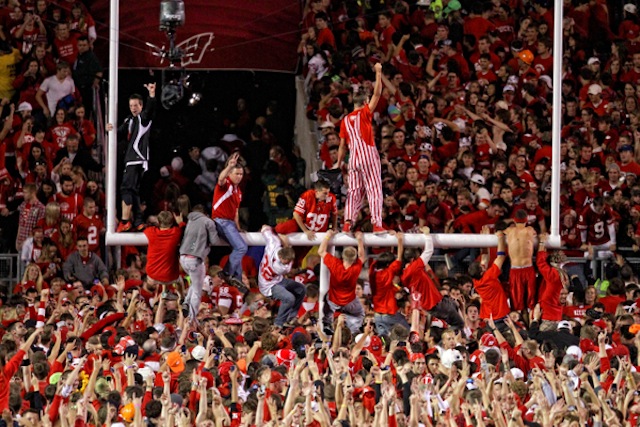
With the NFL season finally underway, many of us will be spending much of our Sundays in restaurants, bars, and, in most cases, our own homes glued to the television screen attempting to keep up with our favorite team. But we've all been around someone who becomes animated and shouts at every call whether good or bad and wondered why they are going crazy for the game? Here's the answer.
Recent studies may show that their hysteria may not be a pure indicator of how dedicated they are to their favorite team, but referenced to two hormones-testosterone and cortisol.
Testosterone is primarily a male- dominated hormone that's key in developing the male reproductive system as well as other characteristics such as facial hair, muscle mass, and voice depth. Aside from the physical attributes that are related to testosterone, there are also other behaviors that we connect to this hormone. Such as… aggression, success, and high confidence. Dr. Al Borhan, local Urologist says, "In a study related to testosterone and sports, [it was] revealed that both levels of testosterone and cortisol were higher when watching games-especially in young men."
This not only speaks to the joy and excitement that can come from watching sports and being locked into the game, but also the culture we live in today. Sports are the ultimate bonding experience amongst strangers and friends. As we adopt teams as our favorite, we also create social connections that spreads like wildfire. It leads us to wearing team colors, painting our faces, participating in gatherings and ultimately cheering for a winner. Like ancient gladiator games, we rush to stadiums to witness an individual or team rise to a new level of glory with the purpose of being able to retell and relive the moment with others.
Respectively, the bigger sense of connection, the more rooted emotional charge we experience. Unlike any other time, due to the social flux of overwhelming media and information, our tie to the game has never been stronger. Leading up to the big game on Sunday, all week we can receive player updates, injury reports, and predictions that get our motors running before the game even starts. This build up can be so extraordinary that it can create a cathartic effect that reaches its peak in the middle of a game and tapers off towards the end.
This therapeutic feeling is the work of testosterone and cortisol reciprocating one another. While the testosterone is rising through excitement, the cortisol levels are too, because they are released when we experience various forms of stress. Both are driven by the moment of the game and the potential for change that is so great that emotions can waiver from happiness to rich anxiety within seconds.
"Surprisingly, the players levels are not as elevated as people [that] were watching,” says Borhan. The watching part is the strongest and most viable factor-—and being completely powerless in terms of the outcome. Macho-ness, to a certain degree is equated to winning, thus when we're on the winning side, we feel good and our testosterone levels mirror our delight. And vice versa.
As fans, we are less inclined to handle high- pressure situations than the pros that we idolize. While we sit at the edge of our seats, and sometimes cover our eyes, they are expected to turn off the noise and perform at an incredibly high level.
Bottom line, we all want to have a sense of community and in terms of sports we are welcomed with open arms. However, we must remember to enjoy these games rather than being consumed by them to the point where they get the best of our emotions.